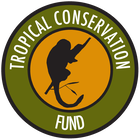Climate change refers to long-term alterations in global or regional climate patterns. Human activities, predominantly the burning of fossil fuels and deforestation, contribute to the accumulation of greenhouse gases, leading to global warming. The consequences of climate change are far-reaching, encompassing rising temperatures, altered precipitation patterns, and an increase in extreme weather events. These changes disrupt ecosystems, affect agricultural productivity, and pose threats to human societies through sea-level rise and extreme weather events.
Biodiversity loss on the other hand is the decline in the variety and abundance of species in a specific habitat. Human activities such as habitat destruction, overexploitation, and introduction of invasive species are major drivers of this phenomenon. The loss of biodiversity undermines ecosystem resilience, reducing the capacity of ecosystems to adapt to changing conditions. It affects essential ecosystem services, including pollination, water purification, and disease regulation. Furthermore, it jeopardizes the potential for scientific and medical discoveries derived from diverse biological sources.
Climate change and biodiversity loss often create feedback loops. For instance, rising temperatures may lead to habitat loss, pushing species towards extinction. The loss of these species, in turn, disrupts ecosystems, potentially amplifying climate change impacts. Both climate change and biodiversity loss influence essential ecosystem services. Healthy, biodiverse ecosystems contribute to carbon sequestration, regulating climate. Simultaneously, climate change-induced disruptions, like altered precipitation patterns, directly impact biodiversity. And maybe most importantly, human activities, particularly the burning of fossil fuels and unsustainable resource exploitation, serve as common drivers for climate change and biodiversity loss. Addressing these root causes is fundamental to effective mitigation and conservation efforts.
Mitigating climate change requires reducing greenhouse gas emissions. Transitioning to renewable energy sources, enhancing energy efficiency, and reforestation are key strategies. International cooperation is essential to address this global issue. Biodiversity loss demands habitat protection, restoration, and sustainable resource management. Conservation efforts should focus on creating protected areas, promoting sustainable land-use practices, and combating invasive species.
While climate change and biodiversity loss are distinct challenges, their interconnections necessitate a unified approach. Recognizing the shared drivers and feedback mechanisms is crucial for developing comprehensive strategies. Tailored solutions that address the specific drivers and impacts of each issue are imperative for safeguarding the planet's ecological integrity and ensuring a sustainable future.
Statistics
Biodiversity loss on the other hand is the decline in the variety and abundance of species in a specific habitat. Human activities such as habitat destruction, overexploitation, and introduction of invasive species are major drivers of this phenomenon. The loss of biodiversity undermines ecosystem resilience, reducing the capacity of ecosystems to adapt to changing conditions. It affects essential ecosystem services, including pollination, water purification, and disease regulation. Furthermore, it jeopardizes the potential for scientific and medical discoveries derived from diverse biological sources.
Climate change and biodiversity loss often create feedback loops. For instance, rising temperatures may lead to habitat loss, pushing species towards extinction. The loss of these species, in turn, disrupts ecosystems, potentially amplifying climate change impacts. Both climate change and biodiversity loss influence essential ecosystem services. Healthy, biodiverse ecosystems contribute to carbon sequestration, regulating climate. Simultaneously, climate change-induced disruptions, like altered precipitation patterns, directly impact biodiversity. And maybe most importantly, human activities, particularly the burning of fossil fuels and unsustainable resource exploitation, serve as common drivers for climate change and biodiversity loss. Addressing these root causes is fundamental to effective mitigation and conservation efforts.
Mitigating climate change requires reducing greenhouse gas emissions. Transitioning to renewable energy sources, enhancing energy efficiency, and reforestation are key strategies. International cooperation is essential to address this global issue. Biodiversity loss demands habitat protection, restoration, and sustainable resource management. Conservation efforts should focus on creating protected areas, promoting sustainable land-use practices, and combating invasive species.
While climate change and biodiversity loss are distinct challenges, their interconnections necessitate a unified approach. Recognizing the shared drivers and feedback mechanisms is crucial for developing comprehensive strategies. Tailored solutions that address the specific drivers and impacts of each issue are imperative for safeguarding the planet's ecological integrity and ensuring a sustainable future.
Statistics
- Nearly 12 million acres of Brazil’s Amazon have been scorched from January to September 2023
- Industrial agriculture and cattle-ranching drive most Amazon fires
- A major solution is to help secure Amazonian land rights to over 8 million acres of Indigenous peoples’ territories in Peru, Brazil, and Guyana
- The Amazon rainforest produces more than 20% of the Earth’s oxygen and is one of Earth’s largest reservoirs of carbon dioxide
- The Amazon plays a critical role in global and regional carbon and water cycles
- More than 80,000 Amazon fires in 2019, a nearly 80 percent jump compared to that in 2018
